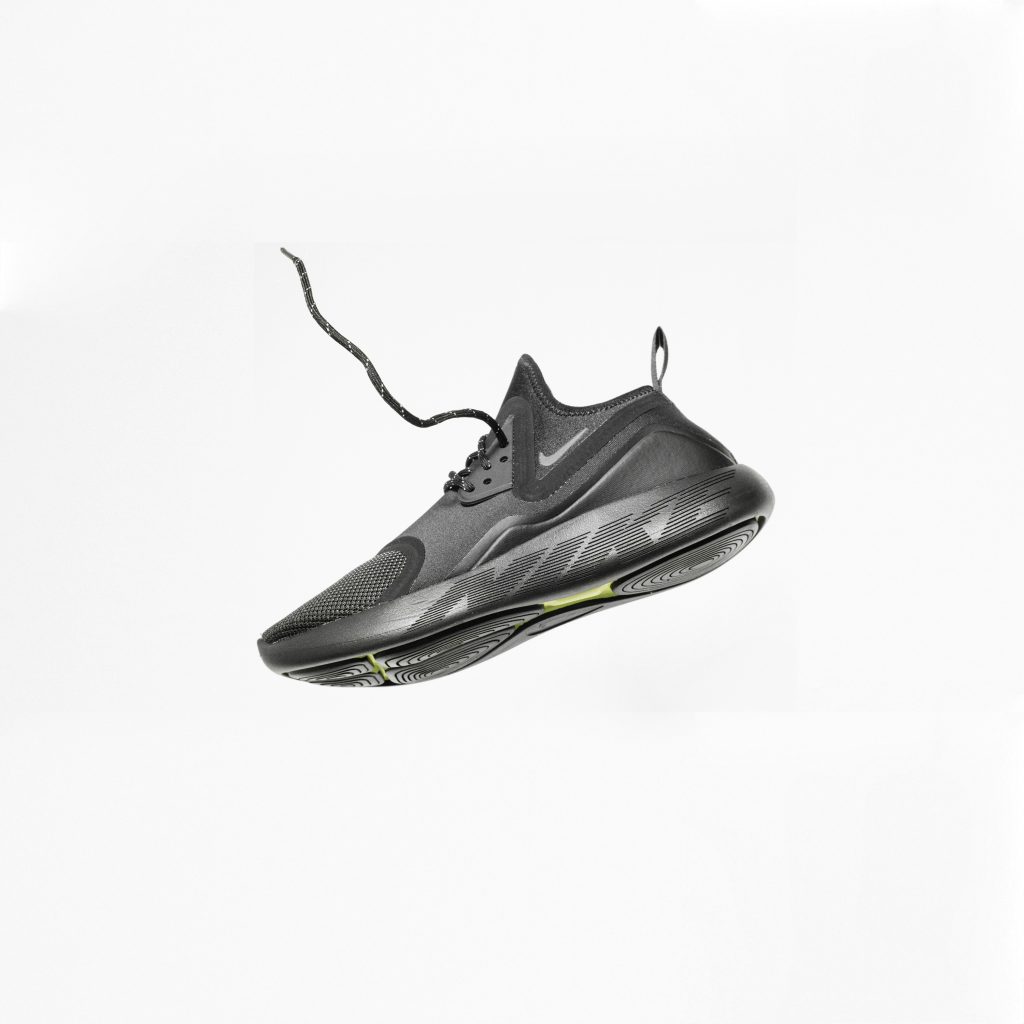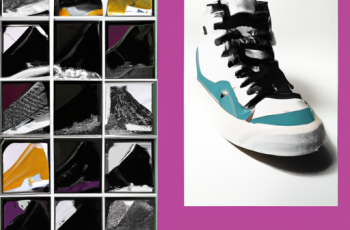Imagine stepping into the world of sneakers and discovering an exciting revolution in materials. Gone are the days when you had to settle for boring leather or predictable mesh designs. Enter the realm of material innovation in chunky sneakers, where creativity knows no bounds. From sustainable options like recycled plastics to futuristic fabrics that are lightweight yet durable, these sneakers are set to redefine the fashion game. Join us as we explore the groundbreaking world of materials in chunky sneakers, where tradition meets innovation in the most stylish way possible.

Recycled Materials
When it comes to sustainable materials for chunky sneakers, recycled materials are a popular choice. Not only do they help reduce waste and minimize the environmental impact, but they also give old materials a new life. Recycled plastics, for example, are commonly used in the production of sneaker uppers. These plastics, which include discarded bottles and packaging materials, are processed and transformed into durable and flexible materials that can be molded into various shapes and designs. By incorporating recycled plastics into chunky sneakers, you can enjoy stylish footwear while contributing to a greener future.
Another recycled material commonly used in chunky sneakers is rubber. Now, you might be wondering how rubber can be recycled. Well, rubber from discarded tires and other rubber products is collected, processed, and transformed into new materials suitable for sneaker soles. These recycled rubber soles offer excellent traction, durability, and comfort, making them an ideal choice for chunky sneakers. Not only does using recycled rubber reduce waste and energy consumption, but it also helps to promote a circular economy.
Textiles, including fabrics and fibers, can also be recycled to create sustainable materials for chunky sneakers. Through processes like shredding and melting, old textiles can be transformed into new yarns and fabrics. These recycled textiles can then be used for sneaker uppers, linings, and even insole materials. By utilizing recycled textiles, you not only reduce the demand for virgin materials but also minimize the amount of textile waste that ends up in landfills. Plus, recycled textiles often have unique textures and patterns, adding a touch of creativity and uniqueness to your chunky sneakers.
Plant-Based Materials
In recent years, plant-based materials have gained popularity in the fashion industry, including in the production of chunky sneakers. One of the most common plant-based materials used is corn-based materials. These materials are derived from cornstarch or corn-derived polymers and can be processed into various components of a sneaker, such as the upper or the sole. Corn-based materials offer a more sustainable alternative to traditional petroleum-based materials, as they are renewable and biodegradable.
Soy-based materials are another plant-based option for chunky sneakers. Made from soybeans, these materials can be processed into fibers, foams, and even adhesives. Soy-based materials are not only eco-friendly but also possess desirable properties such as comfort, breathability, and durability. By choosing sneakers made from soy-based materials, you can enjoy the benefits of sustainable footwear without compromising on style or performance.
Cotton canvas is a well-known plant-based material that has been used in sneaker production for many years. Cotton canvas is made from natural cotton fibers and is known for its strength and breathability. By opting for sneakers made from cotton canvas, you are choosing a material that is biodegradable, renewable, and kinder to the environment. Plus, cotton canvas sneakers have a classic and timeless look that never goes out of style.
Bio-Based Materials
Bio-based materials are another exciting category of sustainable materials for chunky sneakers. These materials are derived from natural and renewable sources, such as plants and fruits, and offer an eco-friendly alternative to traditional shoe materials. One example is mushroom leather, which is made from the mycelium, the root-like structure of mushrooms. This innovative material is not only biodegradable but also possesses a leather-like appearance and texture. By using mushroom leather in sneaker production, you can enjoy the look and feel of leather without contributing to animal cruelty or environmental degradation.
Pineapple leather is another bio-based material that is gaining popularity in the fashion industry, including in the production of chunky sneakers. Derived from the fibers of pineapple leaves, this sustainable alternative to traditional leather offers a similar look and feel, while being cruelty-free and environmentally friendly. Sneakers made from pineapple leather are not only stylish but also contribute to the reduction of waste from the pineapple industry.
Apple leather is yet another example of a bio-based material used in chunky sneakers. Made from apple waste, such as cores and peels, apple leather is a vegan-friendly alternative to traditional leather. It has similar properties to animal leather, such as durability and flexibility, but without the ethical and environmental concerns. By choosing sneakers made from apple leather, you can make a fashion statement while supporting an innovative and sustainable material.
Upcycled Materials
Upcycled materials are materials that have been creatively repurposed from their original form, transforming waste into valuable resources. In the context of chunky sneakers, various materials can undergo upcycling to create unique and sustainable footwear options. Upcycled denim, for instance, involves taking discarded denim fabrics and giving them new life as sneaker uppers or decorative elements. This not only reduces textile waste but also adds a trendy and vintage touch to your chunky sneakers.
Upcycled rubber is another popular choice when it comes to sustainable footwear. Old rubber products, such as tires or industrial rubber waste, can be transformed into new rubber materials suitable for sneaker soles. By upcycling rubber, you help divert waste from landfills and reduce the need for virgin rubber production. Plus, upcycled rubber soles offer excellent grip and cushioning, providing both comfort and sustainability in one package.
Upcycled leather is an innovative way to give discarded leather products a new purpose. By repurposing leather scraps or unused leather products, such as jackets or belts, into sneaker components, you can contribute to reducing the environmental impact of the fashion industry. Upcycled leather sneakers offer the durability and aesthetics of traditional leather footwear, but with a more sustainable twist.

Bio-Fabricated Materials
Bio-fabricated materials, also known as lab-grown materials, are produced through biotechnology and mimic the properties of natural materials. Lab-grown leather, for example, is created by culturing animal cells in a controlled environment. This innovative process allows for the production of leather that is cruelty-free and has a significantly lower environmental impact compared to traditional leather production. Sneakers made from lab-grown leather offer the look and feel of real leather, without the associated ethical concerns.
Lab-grown textiles are another exciting development in the realm of bio-fabricated materials. By using cellular agriculture techniques, textile fibers can be grown in a laboratory setting, reducing the need for traditional agricultural processes. Lab-grown textiles can be used to create breathable and versatile materials for sneaker uppers and linings. By opting for sneakers made from lab-grown textiles, you are supporting a sustainable and cruelty-free alternative to traditional textile production methods.
Synthetic spider silk is another bio-fabricated material that is making waves in the fashion world. Inspired by the strength and elasticity of spider silk, scientists have successfully developed synthetic spider silk fibers. These fibers can be used to create lightweight and durable materials for chunky sneaker uppers, ensuring both style and sustainability. By choosing sneakers made from synthetic spider silk, you can walk with confidence knowing that you are supporting an innovative and eco-friendly material.
Nano-Enhanced Materials
Nano-enhanced materials incorporate nanotechnology to enhance the performance and properties of the materials used in chunky sneakers. Nanofiber technology, for example, involves the manipulation of materials at the nanoscale to create fibers with unique properties. These nanofibers can be used to improve breathability, moisture-wicking, and durability in sneakers. By incorporating nanofibers into chunky sneakers, you can enjoy enhanced comfort and performance.
Graphene-infused materials are another example of nano-enhanced materials that are revolutionizing the sneaker industry. Graphene, a single layer of carbon atoms arranged in a hexagonal lattice structure, is known for its exceptional strength and conductivity. By incorporating graphene into sneaker components such as soles or uppers, footwear manufacturers can create sneakers with improved durability, flexibility, and even thermal regulation. Sneakers made with graphene-infused materials offer cutting-edge technology and sustainability in one package.
Nano-coating for water resistance is yet another application of nanotechnology in the realm of sustainable sneakers. By applying a thin layer of nano-coating to sneaker uppers, shoes can become resistant to water, dirt, and stains. This nano-coating creates a protective barrier that repels liquids while allowing the material to breathe. Adding nano-coating to chunky sneakers ensures that your footwear remains in top condition, even in wet or muddy conditions.

Sustainable Alternatives to Glue
When it comes to sneaker production, glue is often used to attach different components together. However, traditional glues can contain harmful chemicals and contribute to pollution during the manufacturing process. Fortunately, there are sustainable alternatives to traditional glue that can be used in the production of chunky sneakers.
Water-based adhesives, for example, are a popular option for eco-conscious footwear brands. These adhesives are formulated using water as a solvent instead of harmful chemicals. Water-based adhesives offer a reliable and environmentally friendly alternative, ensuring that your sneakers are free from toxic substances while maintaining excellent adhesion.
Biodegradable adhesives are another sustainable option for chunky sneakers. These adhesives are designed to break down naturally over time, minimizing their environmental impact. By choosing sneakers made with biodegradable adhesives, you can feel good about your footwear choice and contribute to a cleaner and greener future.
Solvent-free adhesives eliminate the use of harmful solvents commonly found in traditional adhesives. Instead, these adhesives use heat or pressure to bond materials together. Solvent-free adhesives offer a safer and more sustainable option for chunky sneakers, reducing the release of volatile organic compounds (VOCs) into the environment.
Alternative Sole Materials
The choice of sole material is crucial in creating comfortable and sustainable chunky sneakers. Traditional soles, often made from EVA foam or rubber, can have a significant environmental impact. However, there are sustainable alternatives available that provide both comfort and eco-consciousness.
Recycled EVA foam is a popular choice for sustainable sole materials. EVA foam, which stands for ethylene-vinyl acetate foam, is commonly used in sneaker soles due to its cushioning and shock-absorbing properties. By using recycled EVA foam, shoe manufacturers can reduce their carbon footprint and prevent the accumulation of foam waste.
Cork is another sustainable option for sole materials. Cork is obtained from the bark of cork oak trees and is a renewable resource. Its unique cellular structure makes it lightweight, flexible, and resistant to water, making it an excellent choice for sneaker soles. By opting for sneakers with cork soles, you contribute to the preservation of cork oak forests and promote sustainable footwear production.
Rubber alternatives, such as recycled rubber or natural rubber, are also gaining popularity as sustainable sole materials. Recycled rubber soles incorporate discarded rubber materials and provide excellent traction and durability. On the other hand, natural rubber, sourced from rubber trees, offers a renewable and biodegradable alternative to synthetic rubber. Sneakers made with rubber alternatives prioritize both comfort and sustainability.
3D Printing Innovations
3D printing has revolutionized the manufacturing industry, and it is now making its way into the world of chunky sneakers. Numerous 3D printing innovations are enabling the production of customizable and sustainable footwear.
3D printed soles are one of the most exciting applications of 3D printing in the sneaker industry. Using specialized printers and sustainable materials, shoe manufacturers can create intricate and functional sole designs that cater to individual foot shapes and needs. 3D printed soles not only offer customized comfort but also reduce material waste during the manufacturing process.
Customizable shoe components go beyond just the soles. With 3D printing, sneaker uppers, midsoles, and even laces can be personalized to meet specific preferences and requirements. This level of customization minimizes overproduction and ensures that each pair of sneakers is tailored to the wearer’s needs, promoting a more sustainable approach to footwear manufacturing.
Reduced waste production is another significant advantage of 3D printing innovation in the sneaker industry. Traditional manufacturing processes often result in material waste due to cutting and shaping. 3D printing allows for precise and efficient use of materials, reducing waste and minimizing the environmental impact. By embracing 3D printing technologies, shoe brands can contribute to a more sustainable future while delivering unique and stylish chunky sneakers.
Smart Textiles
The integration of smart technologies is transforming the concept of chunky sneakers, making them not only fashionable but also functional. Smart textiles, or e-textiles, refer to fabrics and materials that incorporate electronic components or technology for various purposes.
Integrated sensors for activity tracking are one example of smart textiles in chunky sneakers. These sensors can monitor and measure your movement, steps, and even heart rate. By wearing sneakers with integrated activity tracking sensors, you can keep track of your fitness goals and monitor your performance, all while enjoying stylish and comfortable footwear.
Self-cleaning materials are another exciting development in the realm of smart textiles. These materials are treated with special coatings or infused with nanoparticles that repel dirt and stains. By wearing sneakers with self-cleaning materials, you can spend less time worrying about keeping them clean and more time enjoying your adventures. Self-cleaning materials reduce the need for frequent washing, saving water and energy in the process.
Temperature-regulating fabric is yet another innovative application of smart textiles in chunky sneakers. These fabrics are designed to adjust to your body temperature, offering enhanced comfort in various weather conditions. By choosing sneakers with temperature-regulating fabric, you can stay comfortable and cool in hot weather or warm and cozy in cold weather. This technology reduces the need for additional layers or accessories, promoting a minimalist and sustainable approach to footwear.
In conclusion, material innovation in chunky sneakers goes beyond traditional options, such as leather and mesh. Sustainable materials, including recycled materials, plant-based materials, bio-based materials, upcycled materials, bio-fabricated materials, nano-enhanced materials, and smart textiles, offer eco-friendly alternatives without sacrificing style or performance. By choosing sneakers made from these innovative materials, you can make a positive impact on the environment while stepping out in style. So why not take a step towards a greener future and choose chunky sneakers that are not only fashionable but also sustainable?


